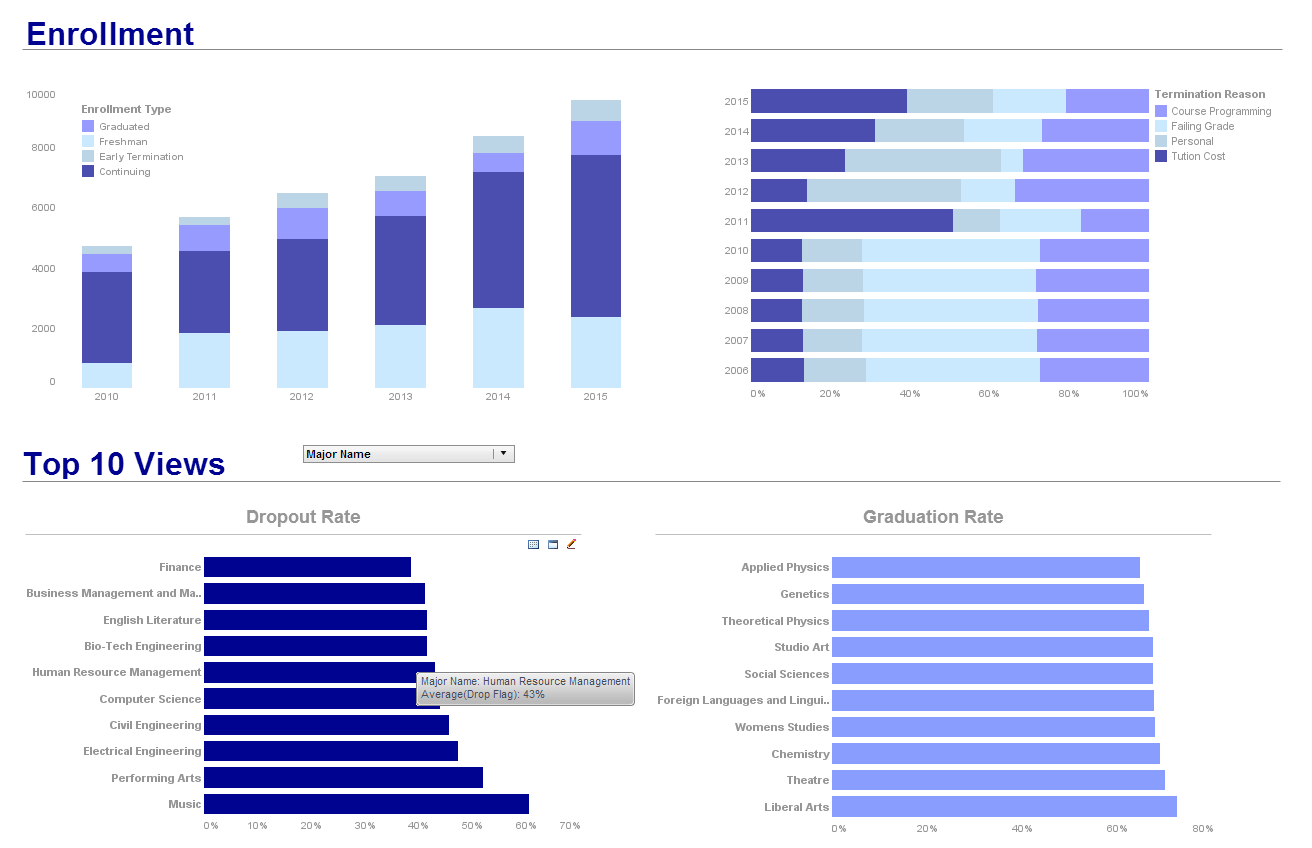The Six Fatal Mistakes of Performance Management
This is the continuation of the transcript of an in-person customer seminar hosted by InetSoft on the topic of "Performance Management Best Practices." The speaker is Christopher Wren, Principal Consultant at TFI Consulting.
I like to start with that slide because I want to talk to you today about what I call the six brutal facts, the six fatal mistakes of performance management. I am going to have to go quickly. Well, here they are. I want to talk about each one of them with you. These are the six fatal mistakes. We’ve perpetuated silo thinking. We over complicate the process. We don’t involve the workforce. We measure the wrong things. We declare victory too soon. We don’t institutionalize the initiative.
I did my masters research into the nature of conflict and functional groups in organizational life. I’m fascinating with the notion of conflict. The first thing I talking about is silo thinking. Do you all know what an organization silo is? What’s a silo? That’s right, departments and divisions within your organization.
If you want to see your silos, get a picture of your org chart. It’s the way we organize ourselves, structurally, functionally in order to get the work done. Silos are necessary, but the problem and the danger is when we fall into the trap, then I call it silo thinking. What's that?
| #1 Ranking: Read how InetSoft was rated #1 for user adoption in G2's user survey-based index | Read More |
Problems With Silo Thinking
It’s when I refuse to see how what's going on outside of my area influences. Here’s why I think this is damaging folks. At times silo thinking can lead to a pattern of competition between divisions in organizations. Have you ever seen that? You bet. In time that pattern of competition can become destructive, and in fact, it can lead to a phenomenal waste of energy.
We call tit for tat where divisions within an organization are in such fierce competition with each other, that they’re actually inflicting damage on each other. And who wins in a tit for tat relationship? Nobody. Everybody loses. So I’m taking about the six fatal mistakes in performance management, folks, I think the very first one, the one that I really like you to take home with you today is we perpetuate silo thinking.
So, here’s what we do. We decide we want to implement a performance management initiative. We start by hiring an expensive consultant. Then we go off site. Only executives are left. We go through the whole planning process, and we decide we want to create a menu of measures and how do we organize them? By existing silos. We just start assigning them to divisions in the organization. Now what do you think is wrong with that model?
Almost every division in the organization contributes to how we’re performing. But by giving a measure to just one department to manage to, we just robbed ourselves the opportunity to see the synergy. In other words how is everybody in the organization contributing to our performance there? In fact, we robbed ourselves.
We created silos and walls around it to prevent ourselves from seeing it. Silos are evil. All right here’s what I am talking about, folks, and this is going to be short. I'd love to spend more time on this, but we don't have it. You’ve all heard of the balance scorecard. When I work with organizations I tell them create your own scorecard.
Read what InetSoft customers and partners have said about their selection of Style Scope for their solution for dashboard reporting. |
Balance Scorecard Use Perspectives
I use what are called the balance scorecard use perspectives. I use what I call service areas. Service areas are really just natural grouping of services. It could be chronological or sequential, whatever makes sense to you and your organization, but the idea, folks, we are not reorganizing. We’re not rewriting your org chart. We are creating a framework for you to begin to see performance dependencies as they emerge.
We’ve got to get beyond just looking at the data and ask ourselves how does this influence that, and how come we see what the entire organization is doing? What it is that we’re measuring is synergy. Here is an example of a client with 17,000 employees. For their human resources department, we created a model so they can begin to see performance interdependencies.
Their goal is to attract and employ a workforce. You guys all understand, don't you? They don't have an attracting employee division. A lot of what they do is train and develop the workforce. They don't have a train and develop division. So a lot of what they do is retain employees and provide for the quality work life of our workforce.
| Previous: Performance Management Best Practices |



